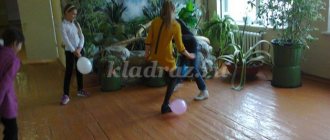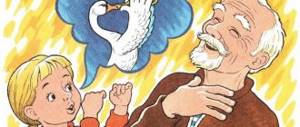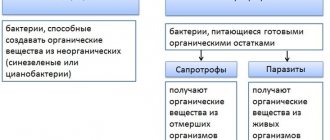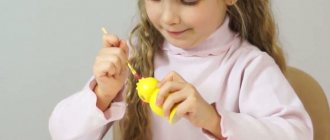Features of forming a class team of junior schoolchildren
Valeria Tveriankina
Features of forming a class team of junior schoolchildren
Features of forming a class team of junior schoolchildren
Features of formation of class group of junior school students
V. A. Tveryankina, L. A. Teryokhina
VA Tveryankina, LA Teryokhina
Samara State Social and Pedagogical University
Annotation . The article discusses the education of the individual through the team. The child will spend a significant part of his time with his classmates, which will in a certain way affect the formation of his personality. Social and psychological processes in the group depend on the level of its cohesion. The article offers recommendations for teachers on how to unite the classroom team of primary school-age students.
Annotation. In article education of the personality through collective is considered. The child will spend a significant part of time with the schoolmates that will definitely affect the formation of his personality. Social and psychological processes in group depend on the level of its unity. In article recommendations for teachers of unity of cool group of junior school students are offered.
Key words: primary school age, personality, team, school, child, class.
It is known that at primary school age children develop elements of social feelings and develop social behavior skills (mutual assistance, responsibility for actions, camaraderie, collectivism, a sense of respect for other people, etc.). Therefore, this period is sensitive for mastering the rules of social behavior [1, p. 232].
Starting from an early age, a person interacts with many people and enters into cooperation with them. It is at primary school age that a child learns to build a dialogue, solve problems, develop positive character traits and conflict-free behavior, since these skills will be useful to him in the future.
Analysis of scientific pedagogical works by L. Yu. Gordin, L. I. Novikova,
T. E. Konnikova, A. T. Kurakina showed that the beginning of consideration of the problems of education of “community”, “comradery”, organization of children's communities, their role in education was laid in the middle of the 19th century
[14, p. 62].
The idea of educating the individual through the collective, expressed by K. Marx, became the basis for pedagogical and psychological theory and practice in the Soviet period. After the creation of the Soviet school system, one of the primary tasks was the formation of a school community that was based on common values and camaraderie. In conditions of purposeful educational and educational work, the need to develop collectivism among students was promoted
N.K. Krupskaya, A.V. Lunacharsky, A.S. Makarenko and other public figures and teachers [2, p. 28].
For pedagogy, the ideas of personality formation in a team are traditional. N.K. Krupskaya and A.S. Makarenko saw the main result of educating an individual in a team - in its social orientation as opposed to “private”, “egoistic” interests. It is not enough to just be an honest and kind person; you must live in the interests of society, feel involved in its struggle for the happiness of the people. Such promising paths of the individual - the direction of his life, as a result of collective education, have not lost their relevance today [5, p. 2].
The purpose of this article is to reveal the features of forming a class team of junior schoolchildren.
The object of this study is the process of forming a class group of junior schoolchildren.
First, let's look at the basic concepts, namely:
1. Junior school age is the period of a child’s life from 6-7 to 10-11 years old, when he is studying in primary school.
2. Personality - a person taken in the system of his psychological characteristics that are socially conditioned, manifest themselves in social connections by nature and relationships are stable, determine the moral actions of a person that are of significant importance for himself and those around him.
3. Personality formation - the process and results of socialization, education and self-development.
4. A team is a group of people that is part of society, united by common goals and similar motives for joint activities that develop this society. [9]
A team is usually understood as a group of people united by common goals and objectives, who have achieved a higher level of development in the process of joint activity. Teams can be creative, military, educational, or labor. In any team, a special type of relationship is formed between people, which is associated not only with their joint activities, but also with value orientations. Throughout his life, a person can be a member of various groups. Collective theory examines the relationship between the individual and the collective. On the one hand, the level of mental and physical development of team members, their activity, ability and capabilities predetermine the educational impact and strength of the team. On the other hand, the development of the individual directly depends on the development of the team, its level, structure and system, and the relationships that have developed within it [2, p. 29].
The team is considered as a complex dynamic system.
The author of the article “Education of the personality of a junior schoolchild in a team,” Klimova K. Yu. offers the following classification of characteristics of a team :
• common socially significant goal: the goal of the team necessarily coincides with public goals, has the support of society and the state and does not contradict their laws;
• general joint activity: students achieve their goals together, and each member of the team takes an active position and responsibility for the result of joint activities;
• relationships of responsible dependence: that is, relationships are established between students in the team, and not only working ones, but also moral unity;
• general elected governing body: there are democratic relations in the team, therefore the governing body is elected by the entire team [6, p. 44].
Domestic teacher, A. S. Makarenko identified the characteristics characteristic of a strong, well-coordinated team:
• optimism is the main feature of life;
• a sense of self-esteem and healthy pride in the team in which you are located;
• feeling of personal safety in your team;
• appearance of the team, its aesthetics and beauty;
• the presence of a playful moment in the life of the team [3, p. 38];
Only a highly developed team successfully fulfills its social functions, namely: it is a natural form of social life activity of members of society and at the same time the main educator of the individual. There are three educational functions of the team:
• organizational – the children's team becomes the subject of management of its socially useful activities;
• educational – the children's team becomes the bearer and promoter of certain ideological and moral beliefs;
• incentive function – the team contributes to the formation of morally valuable incentives for all socially useful activities, regulates the behavior of its members, their relationships [11, p. 133].
The student team implements the following functions:
• associations of students based on a formal basis, for example, age, educational goals;
• pedagogical management, solving pedagogical problems;
• organizing student interaction;
• development, self-affirmation, socialization of the individual [12, p. 45].
At the very beginning of their school life, children are so filled with new feelings and impressions that they exhibit traits that are unusual for them. Aspects that influence the child’s personality and behavior at the very beginning of education:
• Quickly change your daily routine. Most children are left to fend for themselves after school ends. It disorganizes them. At school, children need to engage in intense mental activity all the time, whereas in kindergarten they were almost always busy with play activities.
• New relationships. During the first few days, the child is completely occupied with studying and has virtually no contact with peers.
• Teacher's personality. Relationships with the teacher are built exclusively in the process of educational activities. They are still reserved and businesslike. The distance between teacher and student is not the same as in kindergarten; between him and the teacher, at school it is greater and much more official.
• School team. In a social group, children in first grade feel like helpless kids. But in kindergarten they perceived themselves as elders and main assistants to adults.
The personality of a primary school student is formed and expressed through communication. If we compare the preschool social circle, it is much larger than the social circle of a first-grader. First of all, the figure of the teacher is significant for him. The teacher is the main and unconditional authority. A first-grader is primarily focused on communicating with the teacher. At first, the child also perceives his classmates “through the teacher” - he unconditionally trusts and believes the teacher’s assessment.
Over the course of several years, children of primary school age, with the right upbringing, gain the most important experience of working in a team for their further development. The formation of collectivism qualities is a gradual process. Younger schoolchildren do not yet feel like they are part of a single team; they seem to be isolated and independent, free from each other. If they try to help each other, then, as a rule, this does not happen on their personal initiative, but at the request of the teacher. The team begins to form when, under the influence of the special work of the teacher, children for the first time begin to show a friendly interest in the success and failure, achievements and failures of their classmates, begin to treat educational activities as the business of the whole class, when they accept their own successes as part of the general ones. joint successes. Participation in feasible public collective events plays a huge role in the formation of a team. In fact, this is how children acquire leading experience in collective social activities [7, p. 98].
One cannot but agree that raising younger schoolchildren is not easy. Particular attention should be paid to instilling hard work when children already know how to look after themselves. The correct thing to do would be the gradual inclusion of students in available types of socially useful work. This is very important and useful, since in children of the first grades the personal motives of their work activity clearly appear, because the child does for himself with great desire and diligence, but he does not yet have experience working for others. Consequently, at primary school age, under the influence of education, a serious shift occurs in the mental development of the child, which prepares him to enter a critical and very important period of his life - adolescence [10, p. 143].
In any team, a question arises related to group cohesion. Group cohesion is a group property that is derived from the number and strength of mutual positive attitudes of group members. The main indicator of cohesion is the level of mutual sympathy in interpersonal relationships, i.e., the more group members like each other, the higher its cohesion [4, p. 52].
We can highlight the following positive aspects of the influence of a peer group on the personality of a primary school student:
• In a group, an individual meets people who are the main source of spiritual culture for him.
• Relationships between people that develop in groups carry positive social norms and value orientations that are internalized by the individual included in the system of group relationships.
• The group is a place where an individual practices his communication skills.
• From group members, the individual receives information that allows him to correctly perceive and evaluate himself, preserve and strengthen everything positive in his personality, and get rid of the negative and shortcomings.
• The group provides the individual with a system of positive emotional reinforcements necessary for his development.
A group of junior schoolchildren is characterized by the following features: poor organization, low ability to organize collective activities, emotional instability. The most productive form of organizing joint activities is group work of a personality-oriented nature, which allows you to connect all children to collective life, taking into account their individual capabilities, needs and motives as much as possible [13, p. 294].
To become a team, a group must go through a difficult path of qualitative transformation. In a close-knit team, conditions are created not only for the process of identifying the child with the team, but also for his isolation in the team. The teacher needs to ensure the harmonious flow of the processes of socialization and individualization of the child.
Thus, the following can be identified as the main recommendations for teachers on uniting a team of junior schoolchildren:
1. Introduce a tradition of feedback.
At the end of each quarter and at the end of the year, children write notes where they can ask a question, write something painful that they cannot say out loud. Based on this, the teacher plans educational work.
2. Create a “wish box”.
3. Organize hikes and excursions into nature around your city.
4. Special work should be carried out with “rejected” children. We should try to involve them in joint class activities. Find assignments for them where they would reveal their best abilities. Praise and encourage them more often in the presence of the class, but do this for a specific action or deed they performed.
5. During lessons, you can organize work in groups, and each should have both “strong” and “weak” students. The group must adhere to the principle of mutual assistance and support, there must be motivation for achievement, and there must be a moment of competition between groups.
6. Call everyone by name and achieve this by addressing the children to each other.
Only a correctly pedagogically oriented team serves the formation of a socially significant personality and the manifestation of his individuality. The primary task of the teacher is to help create conditions in the children's team for the adaptation and individualization of each individual.
Bibliography:
1. Burdina, G. Yu., Begeeva, M. V. Development of communicative culture among fourth-graders on the basis of ethnoetiquette // Collection of papers based on the materials of the All-Russian Scientific and Practical Conference. — 2020. — pp. 232-238.
2. Vasiliev, A. M., Vasilyeva, N. A. The formation of the theory of the collective and its role in the formation of personality development // Human development in the modern world. – 2014. – No. 5. — P. 28-34.
3. Ivonteva, A. K. About the technology of collective education A. S. Makarenko // Modern pedagogy. - 2014. - No. 11. — P. 37-40.
4. Kasimova, R. Sh., Sergeeva E. M. Formation of team cohesion in primary school age // Collection of scientific works of teachers, young scientists and students, dedicated to the 210th anniversary of Kazan University. — 2020. — pp. 51-54.
5. Kazakova, M. G. The relationship between the development of the team and the moral formation of personality: dis. Doctor of Pedagogical Sciences: 13.00.01: defended 11.09.83 / M. G. Kazakova. – Leningrad, 1983. – 423 p.
6. Klimova, K. Yu. Personality education of a junior schoolchild in a team // New science: experience, traditions, innovations. - 2020. - No. 4. — P. 43-45.
7. Parfenova, T. A. Formation of communicative competence of junior schoolchildren // Collection of scientific papers based on the materials of the I international scientific-practical conference. – 2020. – P. 96-100.
8. Signs of a team. URL: https://www.agepedagog.ru/grepns-740-1.html.
9. Psychological dictionary // azps.ru – tests, trainings, dictionaries, articles. URL: https://azps.ru/handbook/index.html.
10. Tkachenko, O. V. Personality development in primary school age // Psychology, sociology and pedagogy. - 2020. - No. 1. — pp. 138-146.
11. Tolstosheeva, K. N. General concept of the team and collectivism // Current problems of the humanities and natural sciences. - 2020. - No. 4. —
— pp. 132-135.
12. Farkhshatova, I. A. Education of the student body: research results // World of Science. — 2020. — No. 2. — P. 45.
13. Khokholova, N. T., Petrova A. D. Formation of group cohesion in a team of junior schoolchildren. // Collection of materials of the III All-Russian scientific and practical conference of students and graduate students. - 2014. - pp. 293-295.
14. Shengov, Yu. V. On the issue of the origin of the pedagogical theory of personality formation in a team // World of science, culture, education. —
- 2014. - No. 6. — P. 62-65.
The essence of the children's (student) team
Definition 1
A team is a social community of people united on the basis of socially significant goals, common value orientations, joint activities and communication.
The team is of great importance for the formation and development of the personality of a child of any age. However, it is especially important for a child to join a team during primary school age. This is due to the fact that when a child enters school, he acquires a new status and position in society, his entire way of life changes, and it is necessary to learn and accept new rules and norms. Not only the success of all subsequent education, but also adaptation to school depends on how the child is accepted by the new team.
The peculiarity of the team in primary school is that the team itself is created from children who do not know each other, that is, this is a new collective association. The teacher’s task is not only to form children into a team, but also to unite them.
The formation of the student body is carried out by the teacher in joint interaction not only with children, but also with parents. Interaction with parents is necessary in order to better get to know children, their habits, personal qualities and thereby determine the nature of relationships with people around them.
Finished works on a similar topic
- Course work Formation of team cohesion in primary school age 420 rub.
- Abstract Formation of team cohesion in primary school age 260 rub.
- Test work Forming team cohesion in primary school age 230 rub.
Receive completed work or specialist advice on your educational project Find out the cost
Note 1
Thus, the school community is the “cradle” that allows the child to develop throughout the entire period of schooling.
A modern school contains a large number of diverse groups, which allows the child to fully realize his abilities and “try on” various social roles. One of the leading and stable ones is the class team, which is formed at the very beginning of training and remains until the end of training.




